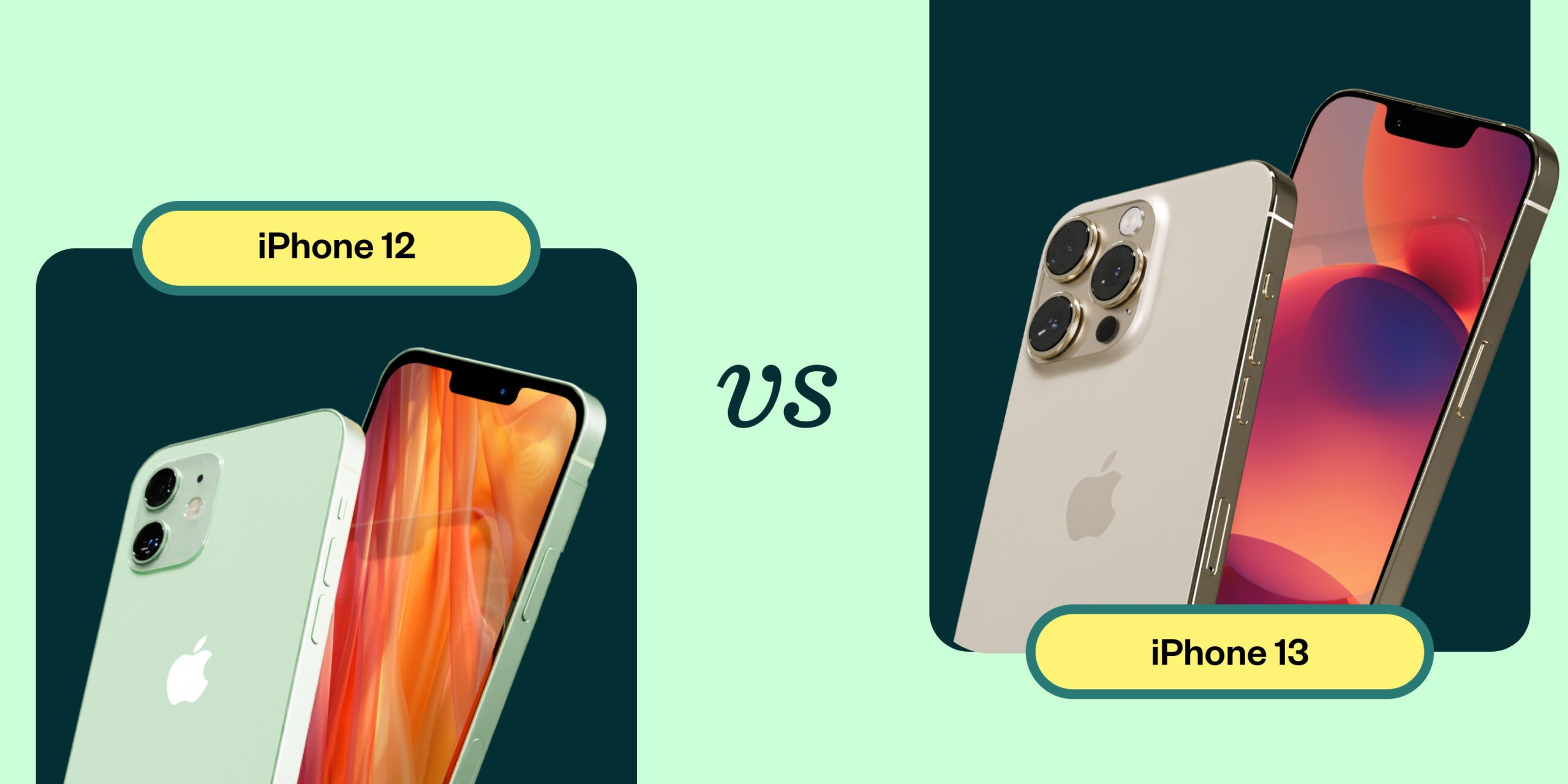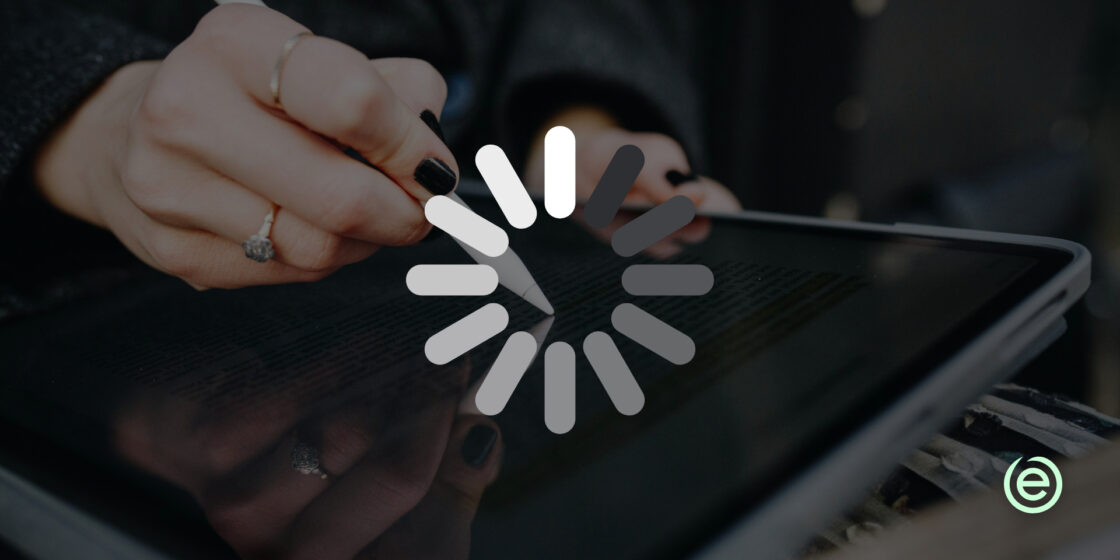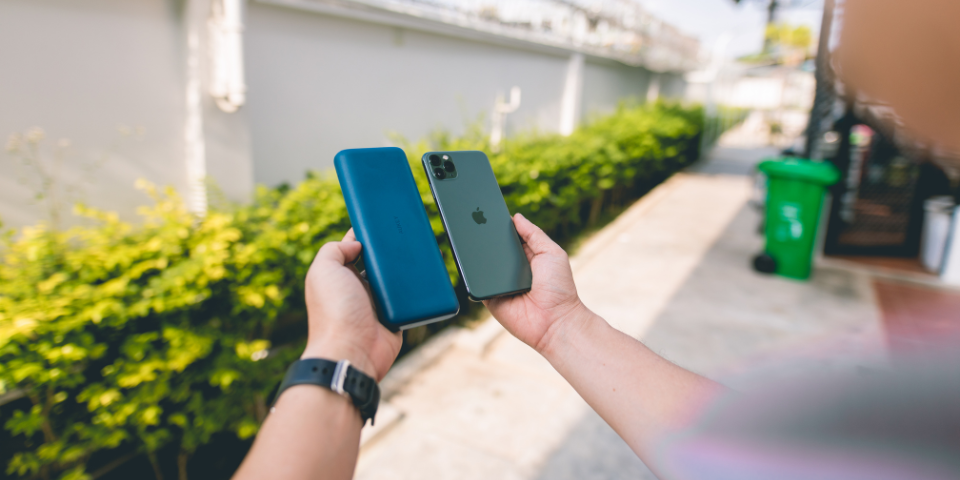
IPhone 12 vs iPhone 13
Should you buy a pre-owned iPhone 12 or iPhone 13 device? This guide will help you to choose one of these phone options, comparing and contrasting features and functionality. The iPhone 13, unveiled in 2021, and the iPhone 12, produced in 2020, are still relatively late model iPhones, and have some value on the pre-owned market. They share a number of features, but the 13 also ushers in some important changes. Read on to see which one of these two iPhones is best for your purchase.
A pre-owned iPhone 12 or iPhone 13 model can be a great way to upgrade your smartphone, trade in your old device, and get something newer and better, without paying hundred more dollars for the latest version of the iPhone.
iPhone 12 Versus iPhone 13 – Features and Specifications
Let’s start with the similarities between the 2020 iPhone 12 model and the 2021 iPhone 13.
In terms of iPhone 12 vs 13, both of them have Apple’s proprietary OLED Super Retina XDR display, and the face ID feature that helps to identify subjects and photos. Other notable similarities include:
- Extra photography features like night mode, true tone flash and Apple’s ‘deep fusion’ functionality
- Modern ceramic shield
- Wireless charging capability
- Both the iPhone 12 and the iPhone 13 have Apple’s new MagSafe design.
(Important disclaimer on MagSafe – although this technology allows you to easily connect lots of accessories to your iPhone, Apple found that with the iPhone 12 model, magnet-based charging and connection can do damage to items like credit cards and vehicle key fobs in the user’s pocket. Specifically, they can interact with RFID chips and magnetic strips. However, this new design is very convenient for quick charging, and safe when used correctly.)
Now let’s look at some of the differences between the iPhone 12 and iPhone 13:
iPhone 12
- Operating System:iOS 14.1
- Processor:Apple A14 Bionic (5nm)
- Memory:4GB RAM
- Storage:64GB
- Rear Camera:12MP Wide
- Rear Camera:12MP UltraWide
- Front Camera:12MP Selfie
- Battery:Li-Ion, non-removable, fast charging 20W
- Display Size:6.1″
- Display Resolution:1170 x 2532 pixels
- Connectivity:Wi-Fi, Bluetooth 5.0, GPS, NFC, USB 2.0
- Height:0.29″
- Width:2.81″
- Length:5.78″
- Weight:164g
iPhone 13
- Operating System:iOS 15, upgradable to iOS 15.1
- Processor:Apple A15 Bionic (5nm)
- Memory:4GB RAM
- Storage:128GB
- Rear Camera:12MP, f/1.6, 26mm Wide
- Rear Camera:12MP, f/2.4, 120 degree, 13mm, UltraWide
- Front Camera:12MP, f/2.2, 23mm Wide
- Battery:Li-Ion 3240mAh, non-removable, fast charging 23W
- Display Size:6.1″
- Display Resolution:1170 x 2532 pixels
- Connectivity:Wi-Fi, Bluetooth 5.0, GPS, NFC, USB 2.0 Lightning
- Height:0.30″
- Width:2.81″
- Length:5.78″
- Weight:174g
One of the most notable differences between the iPhone 12 and the iPhone 13 is battery life: up to 17 hours of video play with the 12, and up to 19 hours with the 13. We’ll talk about that a bit more in-depth later.
There’s also more in the iPhone 13’s camera design, which we will cover in the corresponding section.
Other Design Differences
One of the major differences between the iPhone 12 and the iPhone 13 is that the iPhone 13 has a smaller notch on top – 20% smaller, to be precise. There’s also different camera positioning, but other than that, the phones have the same flat edges and ceramic shield design. The ceramic shield itself, developed in conjunction with Corning, has tiny nano-ceramic crystals that strengthen the frame of these modern iPhones; there’s also slightly thicker high-grade aluminum on the edges than on some other iPhone models.
iPhone 12 and iPhone 13: Display
As mentioned above, these phones both have a lot of the 6.1 inch OLED super retina XDR display features. It’s two successive versions of Apple’s award-winning display design. The difference is that the iPhone 13 offers brighter displays, as noted in specification guides.
iPhone 12 and iPhone 13: Apple’s A14 and A15 Bionic Chips
Here’s where things get interesting with the microprocessors built into the iPhone 12 and iPhone 13.
Apple’s bionic chip line is an impressive array of multicore chips. Their design involves groundbreaking numbers of transistors and other design improvements. Some estimate the iPhone 13’s A15 chip to have about a 10% performance edge over the iPhone 12’s A14, but both of these processor chips are high performance, high speed options. Both iPhones also come with a range of storage options.
Connectivity for the iPhone 12 and iPhone 13
Here’s a very important thing to know about these two iPhone models – both of them support new 5G connections.
Earlier iPhones did not have 5G capability, and so if you want this new type of connection, you’re looking at either the iPhone 12 or iPhone 13, or anything newer.
Apple has further announced that the iPhone 12 has something called ‘smart mode’ that can help deal with some of the power problems associated with 5G use. (The iPhone 13 has smart mode, too!) The phone can switch between 4G and 5G accordingly to save power and maximize performance. The smart mode feature may or may not be one of the top things that you will see on a promotion display for these phone models, but it is absolutely valuable to some users who want to save on battery use. This becomes even more important when the phone ages, and the battery performance, in general, decreases.
In general, though, both phones can access 5G’s new type of network. Instead of using only radio waves, 5G combines radio waves with certain types of high frequency waves to generate the benefits generally associated with this protocol – like less latency and quicker downloading.
So those who are upgrading their smart phones who want to utilize 5G capability can select either the iPhone 12 or iPhone 13for this type of modern network performance.
iPhone 12 and iPhone 13: Sim Card Design
Here’s an important thing to know about the iPhone 12 and iPhone 13 devices. Both of them have the capacity for eSims or embedded Sim card design.
Unlike the old traditional hardware Sim card that is removed from the phone after use, the eSim is built in. That means a different process when it comes to switching out phones on a network or decommissioning a phone for a user.
Although both the iPhone 12 and iPhone 13 have physical sim and eSim capabilities, the 13 adds the ability to support multiple eSims.
iPhone 12 and iPhone 13: Cameras
The camera hardware systems for the iPhone 12 and iPhone 13 are mostly the same as well. Both of them have the 12 MP rear camera, the 12 MP ultrawide lens and the 12 MP front camera. They also have many of those features addressed above in the display system. In the iPhone 13, the lens and sensor designs are slightly changed for a bit more light and resolution.
One of the big differences is for ‘film nerds’ who want to analyze the capabilities of the phone’s video mode. Here there is a significant uptick in frames per second, as the iPhone 12 records in 30 FPS, and the iPhone 13 records in 60 FPS. that’s double the frames per second, and while it might not make a huge difference in everyday use, those who are really into video might consider it a plus.
There’s also a new feature on the 13 called Cinematic Mode. To go into more detail, this allows for recording with a shallower depth, and improves focusing transitions.
The iPhone 12 and iPhone 13: Battery Life
Another of the major differences between the iPhone 12 and iPhone 13 involves battery life.
Focus groups involved in market research have found that battery life is extremely important to users. There’s a practical element to that, because the battery life determines how long your phone will stay charged in between charging sessions.
With that in mind, the iPhone 13 gets a higher mark on battery life than the iPhone 12 (and don’t forget the dual camera setup). Estimations are that the iPhone 13 will provide 19 hours for playing video, where the same estimate for the iPhone 12 is 17 hours. The iPhone 13 also delivers higher amounts of battery life for streaming video and other functionality as well.
iPhone 12 and iPhone 13: Size and Shape
You also see that the iPhone 12 and iPhone 13 are roughly the same size.
Here’s where things get strange. The iPhone 13 is just slightly larger. TechRadar calls it a “subtle expansion,” and notes that the upshot of this is that the cases for the 12 won’t fit the 13, and vice versa.
Having said that, the 13 is not that much larger. And the display screen is the same size. The smaller notch gives users a little more space, but there’s not a huge variance in the ways that you use these two touchscreens. (Also, both iPhones have the relatively shallow depth you would associate with these designs.)
There’s also a different range of color choices for each phone, but the crowd-pleasers and basic choices are always there. So color or screen size isn’t really going to be a game changer for choosing between these two models, between iPhone 12 and iPhone 13 options. Neither will the display technology or those kinds of features, unless, again, you really need a brighter output. These two phones do have many of the same features.
So many of the features of the iPhone 12 and iPhone 13 are quite similar. You do get a boost in performance, for example, in video playback, (at least with a new model) with the iPhone 13 with the longer battery life and the A15 chip.
More on Image and Sound
Some of the other small differences between the iPhone 12 and iPhone 13 might be significant for some users.
In addition to the cinematic differences mentioned above, when you look at the placement of camera lenses in the iPhone 13, they’ve been moved around, as has flash and microphone placement.
What you also find is that the lens on the iPhone 13 sticks out a bit more than on the previous model. That might not make a difference to most people, but those who want a smoother surface might not want the additional protrusion.
In terms of sound, some reviewers say that the iPhone 13 has speaker sound that is louder and richer than the iPhone 12, and that that sound is more balanced in general.
Simply put, the iPhone 13 represents all of the design that Apple had put into the iPhone by 2021, including features like image stabilization and new optimization techniques for image video and playback. That along with the longer battery life makes the 13 model appealing to some buyers. But again, either of these phones can be a great purchase. There are also different Pro models available with their own design and feature sets.
Apple’s Support for iPhone 12 versus iPhone 13
If you are one of those buyers who is concerned about long-term use, you may want to think about ongoing support for your pre-owned iPhone.
Apple has pledged to support the first iPhone, the iPhone 12, through 2027. By contrast, the iPhone 13 will be supported at least through 2028. So if you want that extra year of guaranteed manufacturer support, you’ll be looking at the newer iPhone model. As mentioned, you might also want to choose the iPhone 13 if you’re shooting a lot of video, or using the camera in low light conditions.
Sell Your Old Devices with ecoATM
Whether you upgrade to a used iPhone 12 or iPhone 13, you’ll want to get the best return on your old phone. Depending on the make, model and condition, you can earn instant cash today at your local ecoATM kiosk! We have over 6,000 locations across the United States in several neighborhood retailers and malls.
You can save time at the kiosk by pricing your old iPhone ahead of time. Sell your old device and put the funds towards your iPhone 12 or 13 today!
FAQ
Is it worth buying an iPhone 12?
The iPhone 12 is still a relatively late-model Apple phone, and still has some value on the pre-owned market. Although newer models like the iPhone 13 and iPhone 14 have some improved features, the iPhone 12 is still a worthy buy with its A14 bionic chip, proprietary OLED display and more. It’s an improvement over earlier iPhones, in many different ways.
What’s the difference between the iPhone 12 and the iPhone 13?
Some of the major differences involve camera capability, battery life and chip design. The iPhone 13 has a slightly faster A15 chip, some extra camera features, and wider lenses. It’s also a bit heavier than the iPhone 12.
Is the iPhone 12 still good in 2024?
Yes, the iPhone 12 is still a viable purchase option this year. It came out four years ago in 2020, and Apple still supports the phone up until 2027, at least. The iPhone 12 has a lot of the great features that Apple phones are known for, including excellent camera design, modern display, and a hardened ceramic shield to protect the phone.
Can I use the iPhone 12 for 10 years?
It’s possible to use an iPhone 12 for 10 years, even if you purchase it now. However, as mentioned, the end of support is coming up in 2027, barring any extensions. The iPhone 13 will be supported through 2028. After end of support, you may see lack of available updates. But these phones are still excellent purchases and good working examples of an iPhone that is not yet obsolete.








